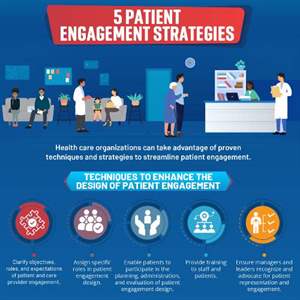Home
Learn more about patient engagement, patient driven innovation, bioinspired innovation
Engaged Thinking
 Offline
Offline15th Edition Pharma Resource Planning and Portfolio Optimization
Philadelphia, PA | Option to attend virtually
February 22-24, 2022 | 08:30 EDT
 Directing Strategy, Decision Making and Resource Optimization for Optimal Portfolio Success
Directing Strategy, Decision Making and Resource Optimization for Optimal Portfolio Success
The marcus evans 15th Edition Pharma Resource Planning and Portfolio Optimization conference will explore how to drive strategic decision making and optimization in resource planning to foster the portfolio success in times of uncertainties. Risk Mitigation…
 Offline
OfflineWhat is Patient Engagement and How Can it Be Improved for the Patient
A study by Health Affairs defines patient engagement by looking at patient engagement as patient activation, a process that healthcare organizations play an active role in.
Read More...
 Offline
OfflineCommunication Strategies to Engage the Patient
Healthcare providers will increasingly need to be trained on the effective use of communication strategies to drive behaviour change. This will necessitate an understanding of the whole patient and the personal drivers for behavior change. Suggested strategies for engagement in this article include: patient education, shared decision-making, motivation interviewing, and empathy; allowing healthcare providers to guide and empower their patients to…
 Offline
OfflineProgress in the Internet of Medical Things (IoMT) Arena
Wearable IoMT biosensing devices allows for the collection of biometric data in real-time, enabling both healthcare providers and patients to actively participate in healthcare management driven by the goal of disease prevention. Connected to smartphones and cloud-based apps, physiological and bio-sensing smart devices continuously measure, record, and provide access to vital data. This article suggests that combining biosensor technology…
 Offline
OfflineThe DIA Annual Canadian Meeting will deliver a comprehensive overview of the current biopharma and device landscape in Canada, while sharing insights into Canada’s broader role in global healthcare product development. From policy updates and priorities shared directly from Health Canada, to sessions on international work sharing and partnerships to key regulatory and clinical considerations for drugs and devices, you will have the exclusive opportunity to address the current issues and…
 Offline
OfflineCOVID Spurred Patient Engagement with Remote Patient Monitoring
The pandemic has enabled the increased the use of remote patient monitoring and telehealth to monitor and manage health at home, but future innovation is needed to meet consumer needs.
Read More...
 Offline
OfflineWhat the Inpatient Care Industry Needs Right Now
By Sarah Daren
 The COVID-19 pandemic affected virtually every industry on the planet in some way or another. There were a select few that actually evolved due to the pandemic, such as internet communications and delivery services, but most industries were negatively affected, with healthcare being at the top of that list. Read More...
The COVID-19 pandemic affected virtually every industry on the planet in some way or another. There were a select few that actually evolved due to the pandemic, such as internet communications and delivery services, but most industries were negatively affected, with healthcare being at the top of that list. Read More...
 Offline
OfflineHealthcare Ecosystems of the Future
The healthcare ecosystems of the future, like other ecosystems, will be centered on the consumer, in this case the patient. The capabilities and services that form the healthcare ecosystems of the future may include: traditional modalities of care, home and self-care, social care, daily engagement and tracking, and financial support.
Read More...
 Offline
OfflineLeveraging Digital Innovation for a Patient-centric, Value-added Experience
Telehealth was once considered a path for urgent care transactions. However, in 2020, more consumers had scheduled video visits with their primary care physician or specialist than for urgent care. Patients increasingly believe they are entitled to their choice of healthcare providers, coverage and digital-health experiences.
Read More...
 Offline
OfflineMayo Clinic, Kaiser Permanente to scale up hospital-at-home efforts with $100M investment into Medically Home
Medically Home installs communications devices, remote patient monitoring devices, emergency response systems and other supplies such as durable medical equipment in a patient’s home so that providers can treat high-acuity patients outside of the costly hospital setting.
Read More...
Search everywhere
Page Options

